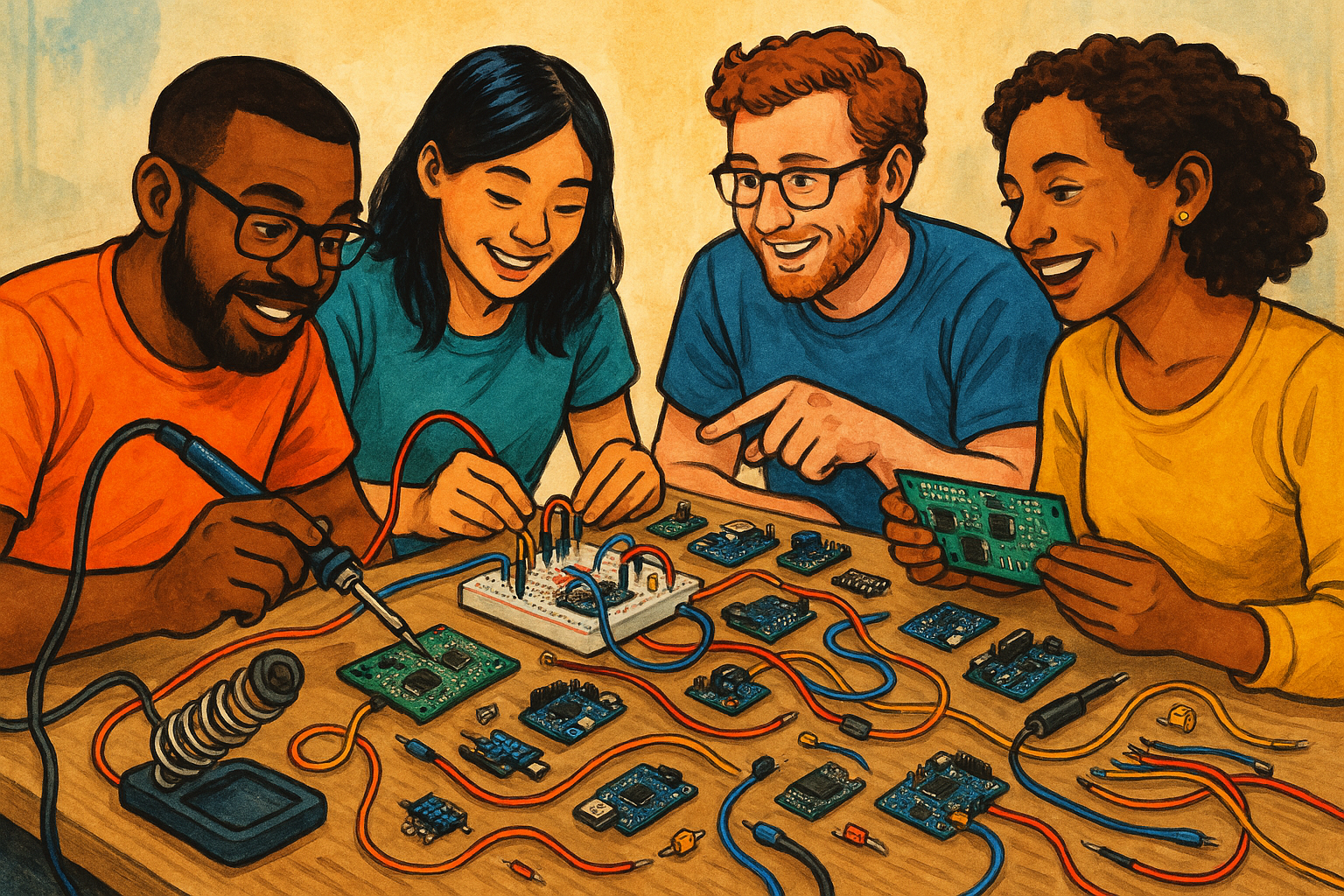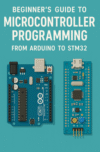Introduction: Why Embedded Systems Can Feel Intimidating
Embedded systems power everything from microwaves to spacecraft, yet many developers describe them as frustrating, overwhelming, or even discouraging. The challenges and turn offs of embedded systems often stem from steep learning curves, limited resources, complex toolchains, and unforgiving debugging processes. But with the right mindset and strategy, these obstacles can be transformed into stepping stones for mastery.
In this article, we’ll walk through the most common pain points in embedded development, why they discourage newcomers and professionals alike, and—most importantly—how to overcome them effectively.
Challenge 1: Steep Learning Curve and Knowledge Gaps
Understanding hardware-software integration
Unlike general-purpose software, embedded programming requires juggling two domains: software logic and hardware realities. Beginners often feel lost when facing registers, datasheets, or real-time interrupts.
Bridging the gap with structured learning resources
The solution is structured progression:
- Start with high-level microcontroller libraries, then move toward direct register manipulation.
- Use beginner-friendly boards (Arduino, STM32 Nucleo, ESP32) before diving into raw silicon.
- Follow project-based tutorials where every concept ties to a working application.
Challenge 2: Limited Resources (Memory, CPU, Power)
Why constrained environments frustrate beginners
Embedded systems rarely have gigabytes of RAM or multicore processors. Even professional engineers struggle when the firmware crashes because the stack overflows by just a few bytes.
Strategies for optimizing resource usage
- Use static analysis to track memory usage.
- Choose efficient data structures and lightweight algorithms.
- Profile your code early to catch bottlenecks.
- Embrace techniques like DMA (Direct Memory Access) to reduce CPU overhead.
Challenge 3: Complex Toolchains and Debugging
Installing and configuring compilers, debuggers, and IDEs
Newcomers often quit when they can’t even compile a “Hello World.” Each vendor has different tools, and setup can feel like a maze.
How to simplify debugging with modern tools
- Use pre-configured environments like PlatformIO or STM32CubeIDE.
- Leverage in-circuit debuggers (ST-Link, J-Link) instead of “printf debugging.”
- Document your toolchain setup to avoid painful reinstallation.
Challenge 4: Vendor Lock-in and Proprietary Ecosystems
Why relying solely on vendor HAL libraries can hurt
Vendor HALs (Hardware Abstraction Layers) speed up development but lock you into non-portable code. Switching MCUs often means rewriting everything.
Best practices for portable, vendor-agnostic code
- Separate hardware-dependent code from application logic.
- Follow CMSIS standards when available.
- Favor open-source drivers and middleware over closed solutions.
Challenge 5: Real-Time Constraints and Timing Issues
Understanding deadlines, jitter, and scheduling
Unlike desktop apps, missing a deadline in embedded systems can cause catastrophic failures—motors misfire, communication drops, or safety systems fail.
Overcoming timing bugs with RTOS and proper design
- Use a Real-Time Operating System (RTOS) for task scheduling.
- Profile interrupt latency and minimize ISR complexity.
- Rely on hardware timers for precise periodic tasks.
Challenge 6: Hardware Dependencies and Fragility
Pinouts, schematics, and hidden pitfalls
Sometimes the problem isn’t the code—it’s a missing pull-up resistor, a miswired pin, or a failing capacitor.
How to debug hardware issues effectively
- Always consult the schematic and datasheet.
- Use oscilloscopes and logic analyzers to trace signals.
- Keep spare boards and parts to isolate hardware vs. software bugs.
Challenge 7: Documentation Overload (or Lack of It)
Datasheets and reference manuals: where to start
New developers get overwhelmed by hundreds of pages of dense text.
Overcoming poor documentation with community and examples
- Start with vendor application notes and reference projects.
- Rely on community forums (ST Community, ESP32 Forum, Reddit, StackOverflow).
- Annotate datasheets with your own notes for future reference.
Challenge 8: Testing and Validation in the Real World
Why simulation isn’t enough
Embedded systems interact with unpredictable environments. A perfectly simulated system may fail in the field.
Setting up effective test frameworks
- Run hardware-in-the-loop (HIL) tests.
- Automate firmware testing with CI pipelines and unit tests.
- Validate edge cases like power loss or communication failure.
Challenge 9: Security and Reliability Concerns
How resource limits make security harder
Many embedded devices lack memory for modern encryption or intrusion detection. This creates attack vectors.
Steps to build resilient and secure firmware
- Use lightweight cryptography libraries.
- Protect firmware updates with signing and verification.
- Follow secure coding guidelines (MISRA-C, CERT).
Challenge 10: Burnout and Motivation Loss
Why engineers get discouraged
Spending hours debugging a silent board can be emotionally draining, leading many to abandon embedded development.
How to stay motivated and keep learning
- Break problems into small, testable steps.
- Celebrate small wins like blinking an LED.
- Engage in communities to share struggles and victories.
Overcoming the Turn Offs: A Practical Roadmap
Breaking projects into milestones
Tackle one subsystem at a time—GPIO first, then timers, then communications.
Leveraging open-source communities and tools
Join GitHub projects, contribute to drivers, or build your own starter libraries.
Building reusable libraries and templates
Once you solve a problem, turn it into a reusable module. This reduces frustration in future projects.
FAQs
Q1. Why do beginners often quit embedded programming?
Because setup, debugging, and steep documentation can feel overwhelming without guidance.
Q2. Can I learn embedded systems without expensive hardware?
Yes—use affordable boards like Arduino, ESP32, or STM32 Nucleo. Simulators like QEMU also help.
Q3. How do I avoid toolchain headaches?
Stick with well-documented environments like PlatformIO or CubeIDE at first.
Q4. Is embedded programming only for low-level experts?
No. With layered libraries and modern tools, even high-level programmers can contribute.
Q5. What’s the best way to debug tricky embedded bugs?
Use hardware debuggers, oscilloscopes, and logic analyzers alongside software logs.
Q6. How can I avoid burnout when learning embedded systems?
Set small, achievable goals and take breaks. Join online communities for support.
Conclusion: Turning Embedded Challenges Into Strengths
The challenges and turn offs of embedded systems are real—steep learning curves, debugging nightmares, limited resources, and documentation overload discourage many. But by tackling them systematically—breaking projects into milestones, embracing open-source tools, and developing resilience—you’ll not only overcome these obstacles but also unlock the exciting world of embedded engineering.
Every frustration you solve becomes a skill that sets you apart as an engineer. What once felt like a turn off becomes the reason you thrive in the field.



